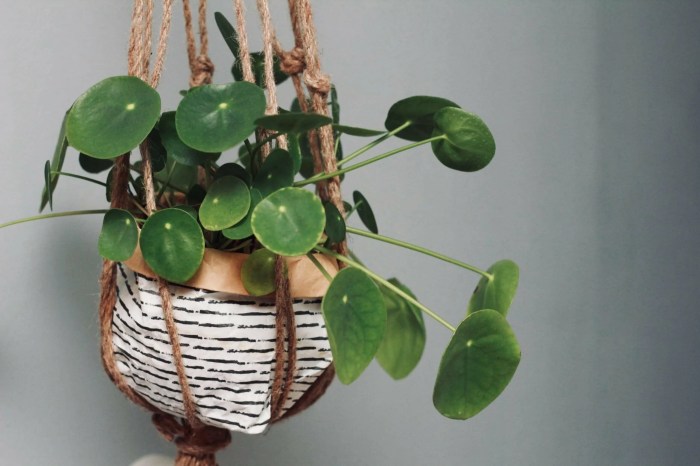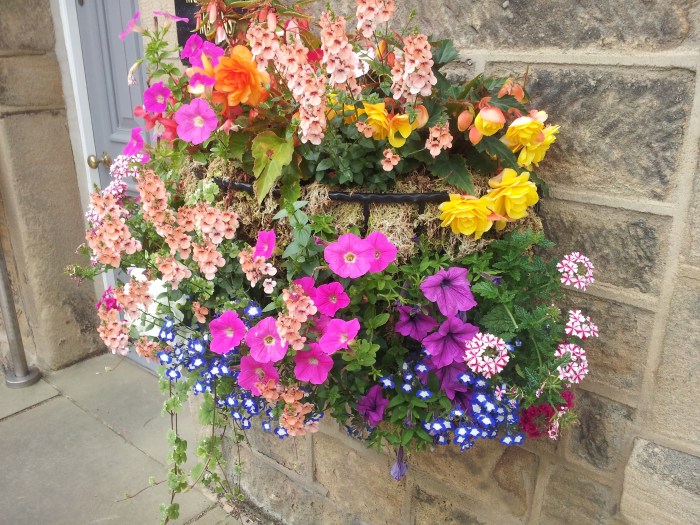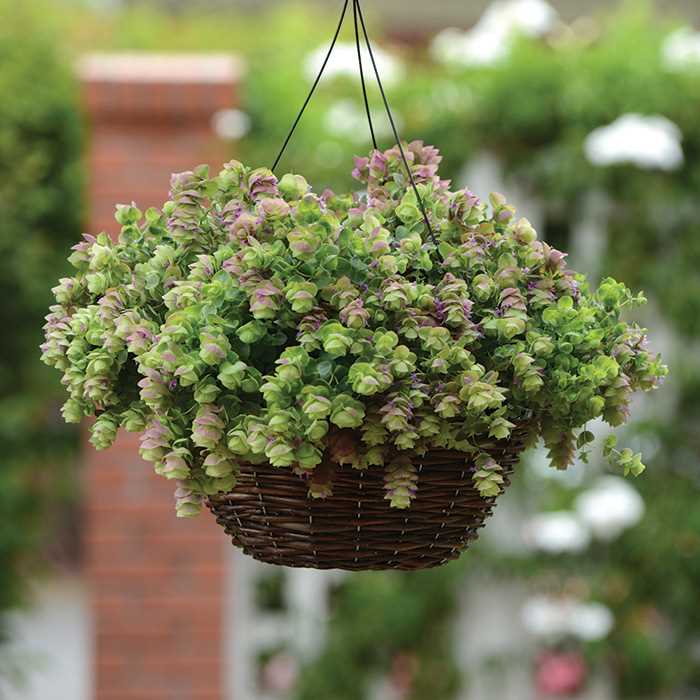Hanging basket house plants have become a popular choice for home decorators, offering a unique way to add greenery and style to any space. Whether you’re a beginner or an experienced gardener, this guide will provide you with everything you need to know about selecting, caring for, and enjoying hanging basket house plants.
From choosing the right plants and baskets to creating stunning arrangements, this comprehensive guide will help you create a beautiful and thriving indoor garden.
Hanging Basket Plants for Beginners

Hanging baskets are a great way to add a touch of greenery to your home, and they’re perfect for small spaces. If you’re new to hanging basket gardening, there are a few things you need to know to get started.
First, you’ll need to choose the right plants. Not all plants are suited to hanging baskets, so it’s important to do your research before you buy. Some good choices for beginners include:
- Fuchsias: These popular plants produce beautiful, bell-shaped flowers in a variety of colors. They prefer partial shade and well-drained soil.
- Begonias: Begonias are another good choice for hanging baskets. They come in a wide variety of colors and shapes, and they’re relatively easy to care for. They prefer partial shade and moist soil.
- Impatiens: Impatiens are a great choice for shady areas. They produce colorful flowers all summer long, and they’re very easy to care for. They prefer moist soil.
- Lobelia: Lobelia is a trailing plant that produces masses of small, blue flowers. It’s a great choice for adding a touch of color to your hanging baskets. It prefers full sun and well-drained soil.
- Petunias: Petunias are a classic choice for hanging baskets. They produce large, trumpet-shaped flowers in a variety of colors. They prefer full sun and well-drained soil.
Once you’ve chosen your plants, you’ll need to choose the right hanging baskets. There are a variety of different styles and sizes to choose from, so you can find one that fits your needs. Make sure to choose a basket that has drainage holes to prevent the roots from rotting.
Finally, you’ll need to choose the right soil mix. A good potting mix for hanging baskets should be well-drained and contain a slow-release fertilizer. You can also add some perlite or vermiculite to the mix to help with drainage.
Advanced Hanging Basket Designs

Advanced hanging basket designs push the boundaries of traditional planters, showcasing innovative and elaborate arrangements that transform outdoor spaces into living works of art. These designs incorporate multiple plant species, vertical elements, and unique shapes to create captivating displays that add depth and interest to any setting.
Vertical Elements
Vertical elements, such as trellises or climbing vines, add height and drama to hanging baskets. Trellises provide support for climbing plants, allowing them to cascade down the sides of the basket or create a lush backdrop for other plants. Climbing vines, such as ivy or clematis, add a touch of greenery and movement, softening the edges of the basket and creating a sense of flow.
Hanging basket house plants add a touch of greenery and beauty to any room. If you’re looking for plants that can thrive in full sun, there are several options to consider. Some popular full sun indoor hanging plants include spider plants, pothos, and succulents.
These plants are relatively easy to care for and can tolerate the bright light and warm temperatures of a sunny window.
Multiple Plant Species, Hanging basket house plants
Advanced hanging basket designs often incorporate a variety of plant species with contrasting textures, colors, and shapes. This creates a visually dynamic arrangement that captivates the eye. For example, a combination of trailing plants, such as petunias or lobelia, with upright plants, such as geraniums or coleus, adds depth and interest.
Adding foliage plants, such as ferns or hostas, provides a lush backdrop and complements the vibrant blooms.
Unique Shapes
Hanging baskets are no longer limited to the traditional round or square shapes. Designers are experimenting with unique forms, such as spheres, pyramids, and even animal shapes, to create eye-catching displays. These unconventional shapes add a touch of whimsy and personality to outdoor spaces, making them stand out from the crowd.
Plant Combinations for Hanging Baskets

Hanging baskets offer a versatile and visually appealing way to add greenery and color to your indoor or outdoor space. By carefully selecting and combining plants, you can create stunning arrangements that enhance the growth and aesthetics of your plants.
Companion planting, the practice of growing compatible species together, offers numerous benefits in hanging baskets. It can improve nutrient uptake, enhance pest resistance, and create a more diverse and resilient ecosystem within the basket.
Flowering and Foliage Combinations
When choosing plants for hanging baskets, consider both flowering and foliage varieties to create a balanced and visually interesting arrangement. Flowering plants provide vibrant pops of color, while foliage plants add texture and depth.
- Trailing Petunias and Ivy Geraniums:Petunias provide a cascade of blooms in various colors, while ivy geraniums offer trailing foliage with vibrant hues.
- Lobelia and Bacopa:Lobelia’s delicate trailing stems and blue flowers complement the cascading foliage and white blooms of bacopa.
- Trailing Verbena and Sweet Alyssum:The bright blooms of trailing verbena contrast beautifully with the delicate white or purple flowers of sweet alyssum.
- Coleus and Fuchsia:Coleus offers colorful foliage in various shades, while fuchsia adds hanging blooms in vibrant hues.
Hanging Basket Maintenance

Maintaining hanging baskets requires ongoing care to ensure optimal plant health and aesthetic appeal. Proper watering, fertilization, and pruning are essential aspects of their upkeep, along with addressing common problems such as pests, diseases, and nutrient deficiencies.
Watering
Hanging baskets require consistent watering, especially during hot and dry conditions. The frequency of watering depends on the type of plants, the size of the basket, and the weather conditions. Generally, water the plants when the top inch of soil feels dry to the touch.
Hanging basket house plants can add a touch of greenery and elegance to any home. If you’re looking for easy-to-grow options, consider trailing house plants, which can cascade over the sides of your basket. From the popular Pothos to the delicate String of Pearls, there are many easy to grow trailing house plants that are perfect for hanging baskets.
These plants require minimal care and can thrive in a variety of lighting conditions, making them a great choice for beginners and experienced gardeners alike. So, whether you’re looking to add a touch of color to your living room or create a lush hanging garden, consider incorporating hanging basket house plants into your décor.
Avoid overwatering, as it can lead to root rot. Use lukewarm water and water the plants thoroughly, allowing the excess water to drain out the bottom of the basket.
Hanging basket house plants add a touch of greenery and beauty to any home. For those seeking to brighten up their outdoor spaces, full sun hanging house plants offer a vibrant solution. These varieties thrive in direct sunlight, making them ideal for porches, balconies, and patios.
From the cascading blooms of geraniums to the trailing foliage of vincas, there’s a wide range of full sun hanging house plants to choose from, ensuring a lush and colorful display throughout the summer months.
Fertilization
Regular fertilization is crucial for providing essential nutrients to the plants in hanging baskets. Use a balanced liquid fertilizer diluted to half strength and apply it every two to four weeks during the growing season. Follow the instructions on the fertilizer label carefully to avoid over-fertilizing, which can burn the roots.
Pruning
Pruning hanging baskets helps maintain their shape and encourage new growth. Remove any dead, diseased, or damaged leaves or stems. For trailing plants, prune the stems to the desired length to prevent them from becoming too long and leggy. Pinching back the tips of the stems can also promote bushier growth.
Troubleshooting Common Problems
Hanging baskets can be susceptible to various problems, including pests, diseases, and nutrient deficiencies.
Pests
Aphids, mealybugs, and spider mites are common pests that can infest hanging baskets. Treat infestations promptly using insecticidal soap or neem oil.
Diseases
Powdery mildew, botrytis, and root rot are common diseases that can affect hanging baskets. Ensure proper air circulation and avoid overwatering to prevent these diseases. Treat infections with fungicides as needed.
Nutrient Deficiencies
Nutrient deficiencies can manifest as yellowing leaves, stunted growth, or poor flowering. Identify the specific nutrient deficiency based on the symptoms and apply the appropriate fertilizer to correct the issue.
Creative Uses for Hanging Baskets: Hanging Basket House Plants

Hanging baskets are not just for plants anymore! Get ready to unleash your creativity and explore unconventional and imaginative uses for these versatile containers.
From vertical gardens to indoor décor, hanging baskets offer endless possibilities for unique display options. Suspend them from walls, ceilings, or even trees to create eye-catching focal points that add a touch of greenery and charm to any space.
Vertical Gardens
Transform your walls into lush vertical gardens with hanging baskets. Fill them with a variety of plants, from trailing vines to leafy ferns, to create a living wall that purifies the air and adds a touch of nature indoors.
Centerpieces
Elevate your dinner parties or special occasions with hanging baskets used as centerpieces. Fill them with vibrant blooms, cascading greenery, or a mix of both to create a stunning focal point that adds height and visual interest to your table.
Indoor Décor
Hanging baskets can also serve as stylish indoor décor elements. Suspend them from the ceiling to create ambient lighting by placing fairy lights or candles inside. Or, fill them with artificial plants or dried flowers for a touch of elegance and color.
Final Review

Hanging basket house plants are a versatile and rewarding way to add beauty and life to your home. With proper care and attention, these plants will thrive and provide you with years of enjoyment.
Essential Questionnaire
What are the best plants for hanging baskets?
There are many plants that can be grown in hanging baskets, but some of the most popular include trailing plants like ivy, ferns, and petunias.
How often should I water my hanging basket plants?
Hanging basket plants should be watered regularly, but the frequency will vary depending on the type of plant and the climate. In general, it’s best to water your plants when the soil feels dry to the touch.
How can I create a stunning hanging basket arrangement?
There are many ways to create a stunning hanging basket arrangement. One popular technique is to use a variety of plants with different textures and colors. You can also add trailing plants to create a cascading effect.